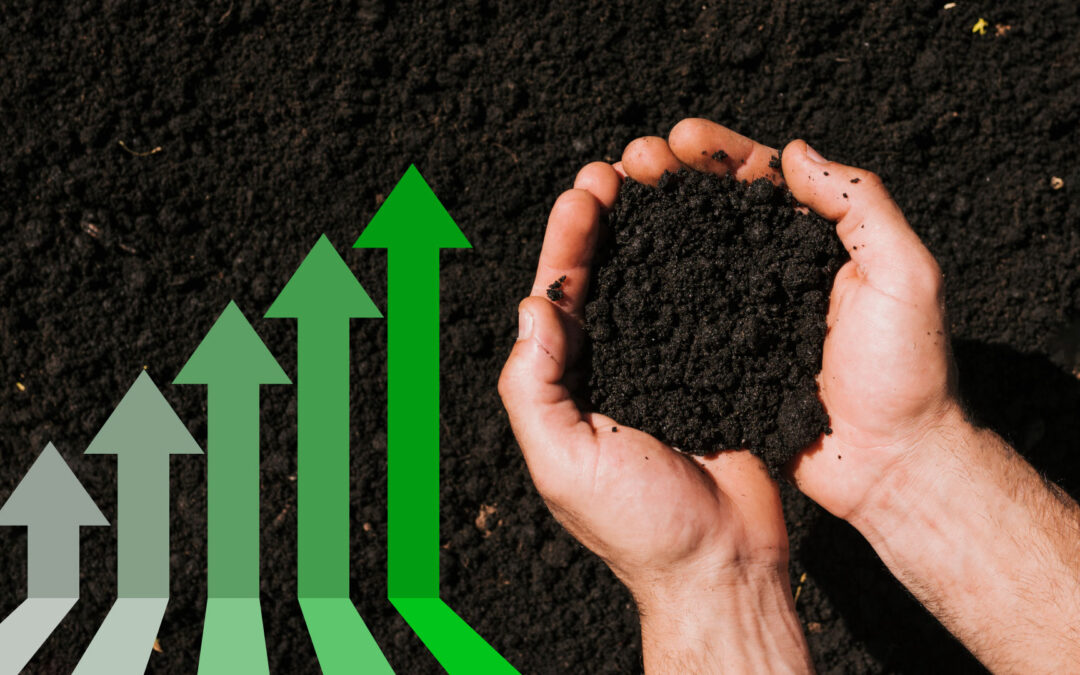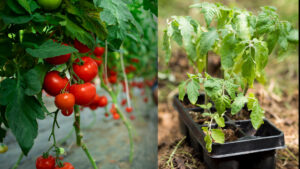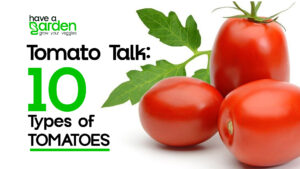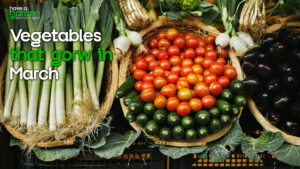Soil serves as the primary source of nourishment for plants. And so, to have a healthy vegetable garden, it is very important to have healthy soil. After selecting a good location for the vegetable garden, you have to prepare soil perfectly. Today, I am going to share you how to prepare soil by maintaining some easy steps.
Before starting to mix fertilizer with the soil, you need to do the below 3 steps:
- Cleaning and digging the selected area: Start cleaning the area like sweeping out leaves, weeding grasses, etc. After that, dig the area with spade, cut the sod into small pieces and harrow the soil with the back of the spade.
- Loosen the soil: Loosen the soil to a depth of at least 8-12 inches so that plants can grow their roots deep down and get nutrients properly.
- Mix organic materials: With the soil mix compost and aged manure and spread them 2-3 inches onto the soil. Mixed composed soils are nutrients and drains water well, this also create more oxygen follow in the soil and plants.
TIP: If you are making garden in the location for the first time then you need to follow the above steps and work on the compost. And the garden is old, no need to dig soil just leave the compost the surface. By doing this the worms will do the rest work for you! It will also prevent weeds grow.
Level the soil and make beds.
There are 2 types of beds you can make.
Raised beds:
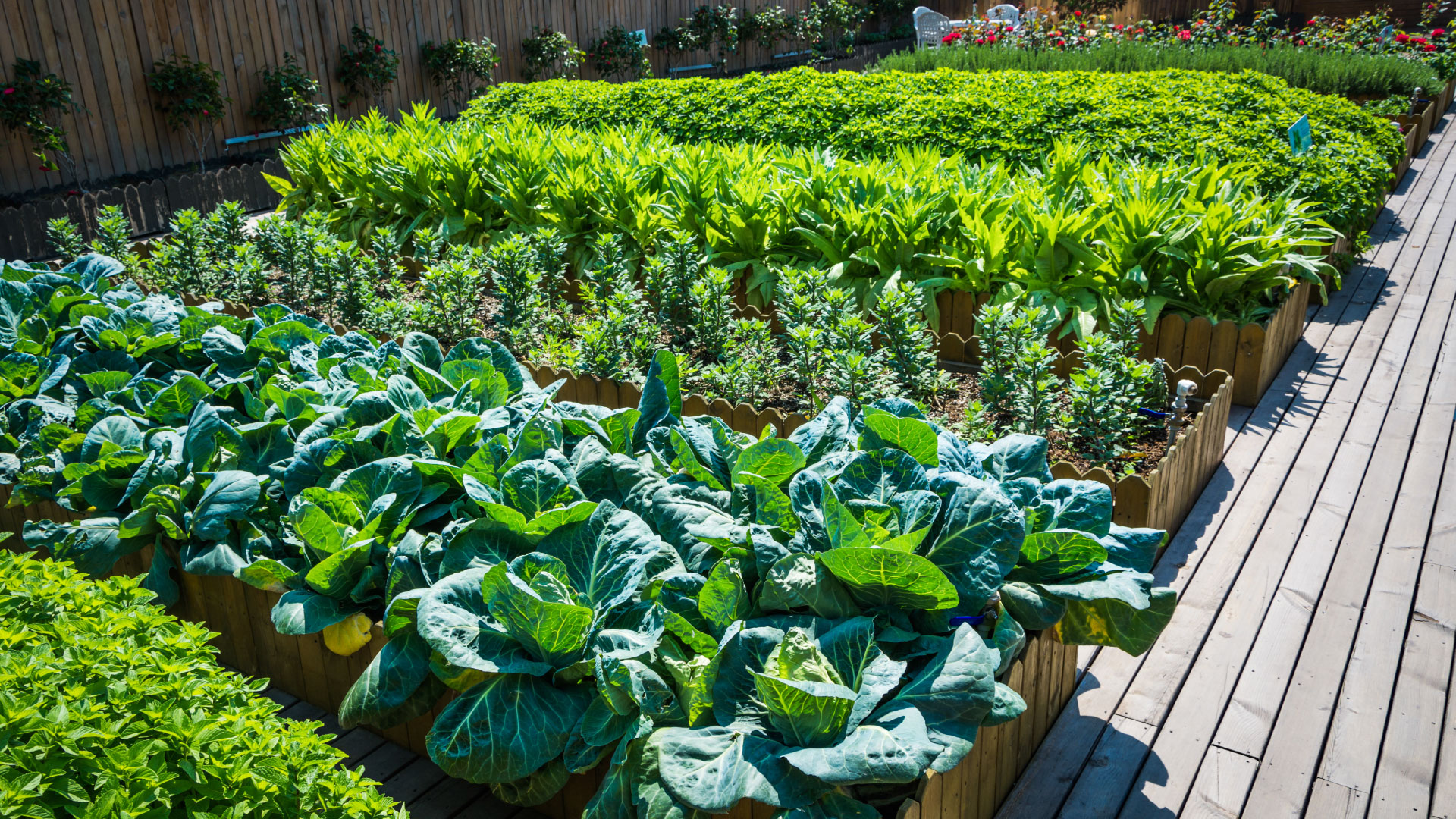
Raised beds are elevated gardening structures used for cultivating plants. They consist of framed areas filled with soil that are raised above ground level. These beds are typically constructed from materials such as wood, bricks, or concrete blocks, and they can vary in size and shape depending on the gardener’s preferences. Raised beds offer several advantages for gardening, including improved drainage, better soil structure, easier weed control, and the ability to create optimal growing conditions for plants. They are particularly popular in areas with poor soil quality or limited space, as they allow for more efficient use of space and resources.
In ground beds:
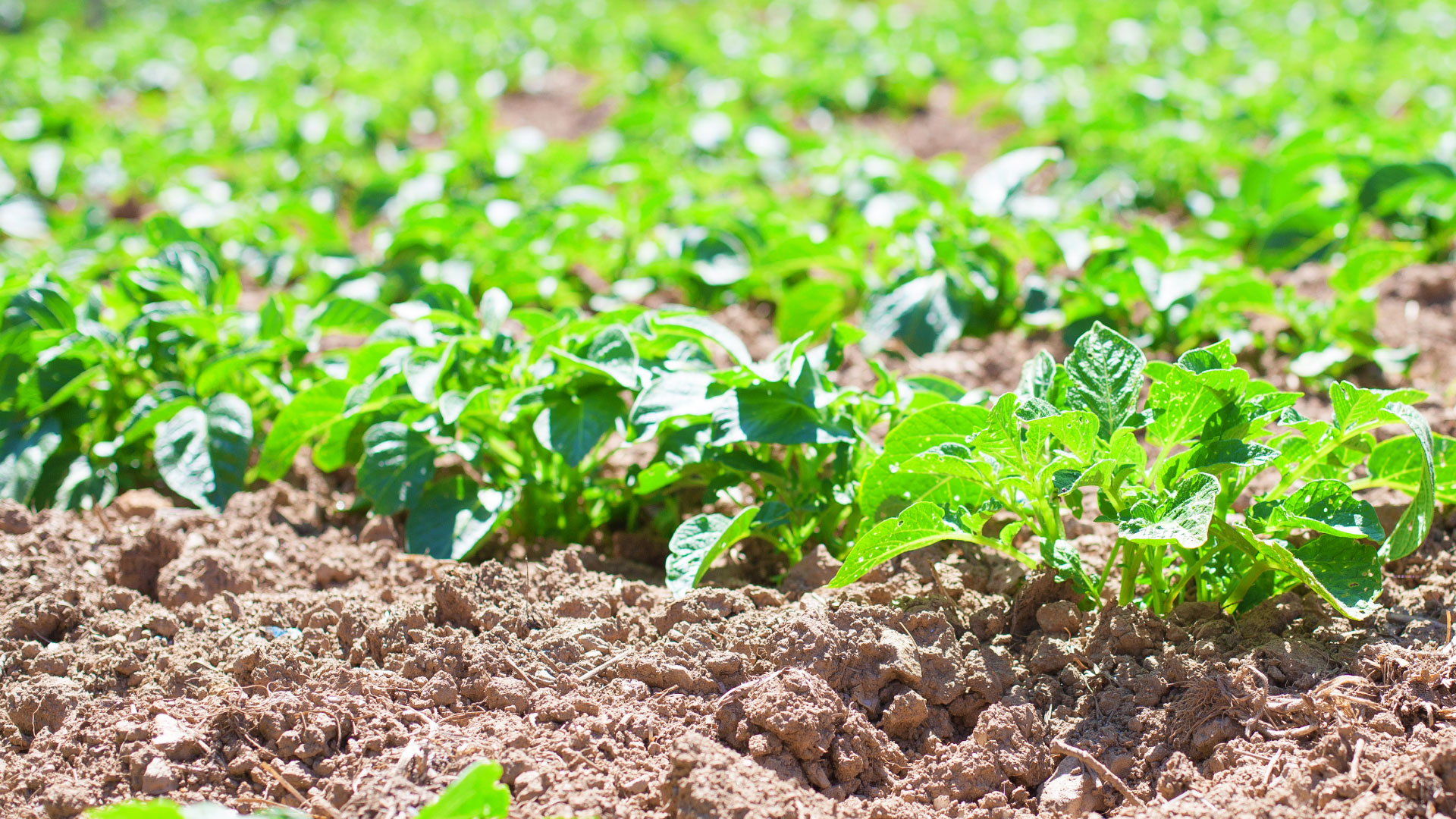
In-ground beds, also known as traditional or conventional beds, are garden beds that are dug directly into the ground rather than being elevated like raised beds. These beds are created by digging out the soil to a desired depth and shape, then planting directly into the native soil. In-ground beds are the traditional method of gardening and are commonly used in both backyard and agricultural settings. While they do not offer the same benefits as raised beds in terms of improved drainage and soil structure, they can still be productive with proper soil preparation and maintenance. In-ground beds are suitable for a wide range of plants and can accommodate larger crops such as corn, squash, and potatoes, as well as smaller vegetables, flowers, and herbs.
If you are living in a cold region, use black plastic to cardboard to block heat and protect the plants from snow, rain and erosions.
Know your soil
There are 3 types of soil. Loamy, clay, sandy soil.
Loamy soil:
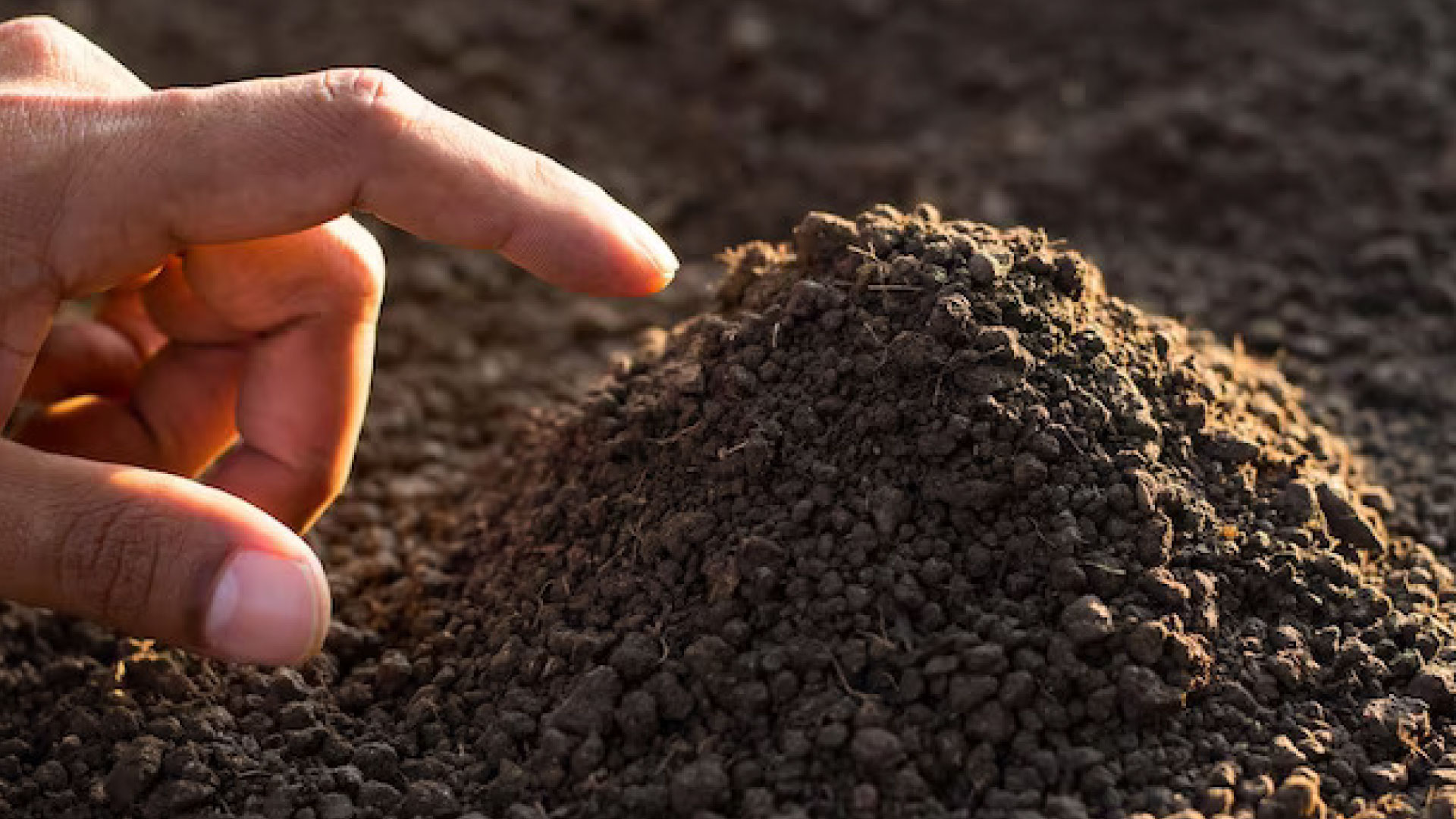
Loamy soil, renowned for its balanced blend of sand, silt, clay particles, and organic matter, stands as a beacon of fertility in the realm of gardening and agriculture. Unlike its soil counterparts, loamy soil possesses a remarkable capacity to retain moisture while maintaining optimal drainage, fostering an environment conducive to robust plant growth. Its crumbly texture serves as a nurturing medium, encouraging the development of intricate root systems and ensuring proper aeration for plant vitality. Derived from a harmonious mix of sedimentary, igneous, and metamorphic parent rocks, loamy soil emerges as a sanctuary of nutrients, enriching plant life with essential minerals and organic nourishment. A cornerstone of biodiversity, loamy soil plays host to a plethora of plant species, making it a coveted asset for the cultivation of flourishing gardens and bountiful farms.
Clay soil:
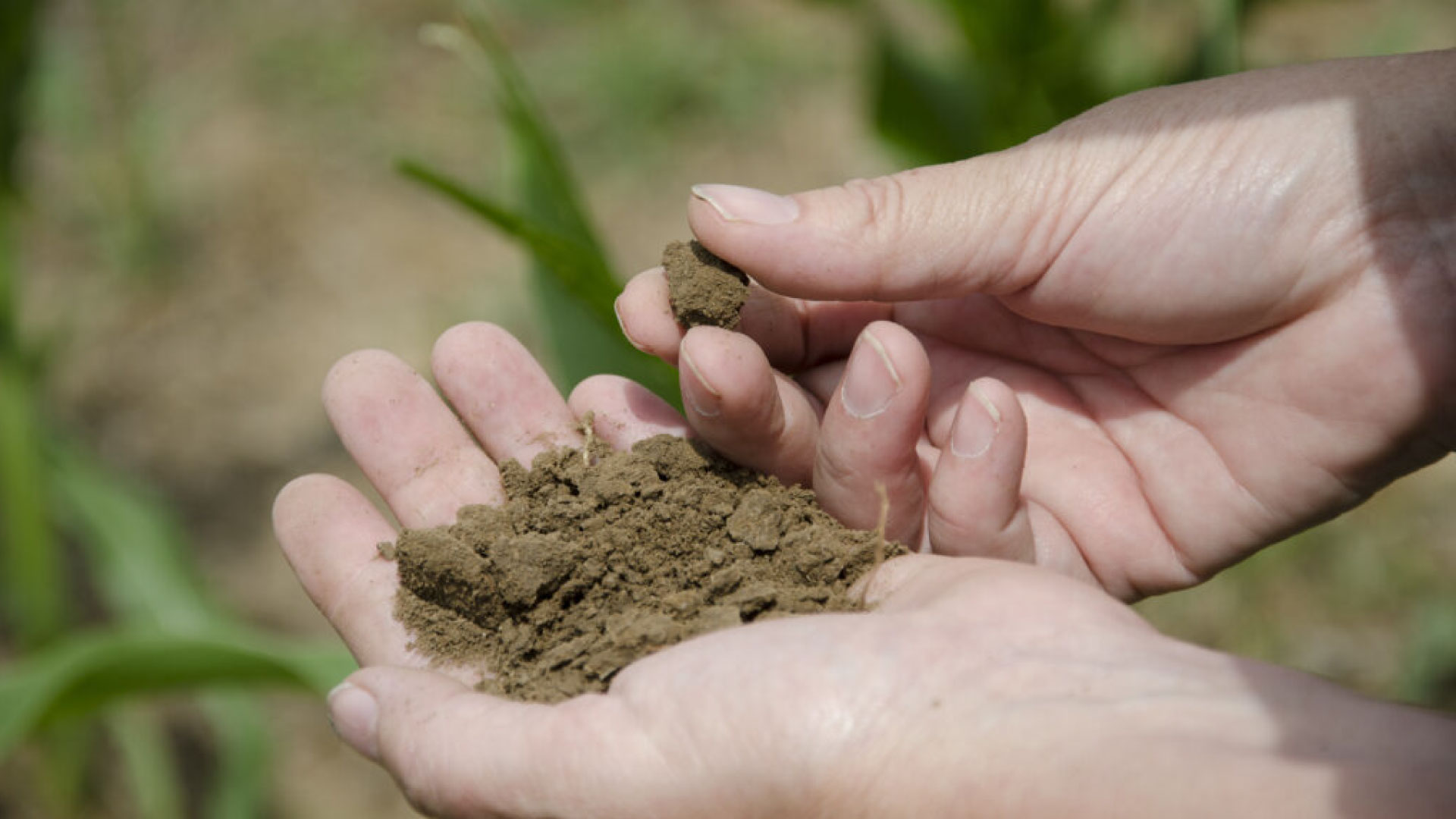
Clay soil, with its distinctive composition of ultra-fine particles and remarkable plasticity, stands as a geological marvel in the realm of soil science. It boasts a texture that feels almost like silk when moistened, a testament to its unique clay mineral composition. However, this soil type presents a double-edged sword for gardeners and farmers alike. On one hand, clay soil exhibits a remarkable ability to retain moisture and nutrients, providing a potential boon for plant growth. Yet, on the other hand, its dense structure can lead to waterlogging and compaction issues, stifling root development and impeding plant vitality.
Despite these challenges, clay soil harbors hidden treasures beneath its surface. Rich in essential minerals and nutrients, it holds the potential to nurture certain plant species to their fullest potential. With careful soil management strategies, such as the incorporation of organic matter and the implementation of proper drainage techniques, clay soil can be transformed into a fertile canvas ripe for cultivation.
In the ever-evolving landscape of agriculture and horticulture, clay soil remains a formidable contender, offering both obstacles and opportunities for those who dare to till its depths in pursuit of greener pastures.
Sandy soil:

Sandy soil, with its distinctive grainy texture reminiscent of sun-kissed beaches, stands as a testament to the geological diversity of our planet. Comprised predominantly of coarse sand particles, this soil type offers a unique set of advantages and challenges for gardeners and farmers alike.
One of the most notable characteristics of sandy soil is its remarkable drainage capability. Water effortlessly permeates through its porous structure, preventing the dreaded waterlogging that plagues other soil types. This natural drainage feature not only promotes optimal aeration for plant roots but also reduces the risk of root rot and other water-related issues.
However, sandy soil’s rapid drainage also poses a dilemma. Nutrients dissolve quickly in water and are easily leached away, leaving behind a nutrient-deficient environment that can hinder plant growth. Additionally, the fast-draining nature of sandy soil means that it requires more frequent irrigation and fertilization to sustain healthy plant development.
Despite these challenges, sandy soil is not without its merits. Its excellent aeration and warmth-retaining properties make it an ideal habitat for heat-loving plants like cacti, succulents, and certain herbs. With strategic soil management techniques, such as incorporating organic matter to improve nutrient retention and implementing mulching practices to conserve moisture, sandy soil can be transformed into a fertile canvas capable of supporting a diverse array of plant life.
In the tapestry of soil types that carpet our landscapes, sandy soil emerges as a unique and dynamic player, offering both opportunities and obstacles to those who dare to cultivate its sandy depths.
Soil Nutrition:
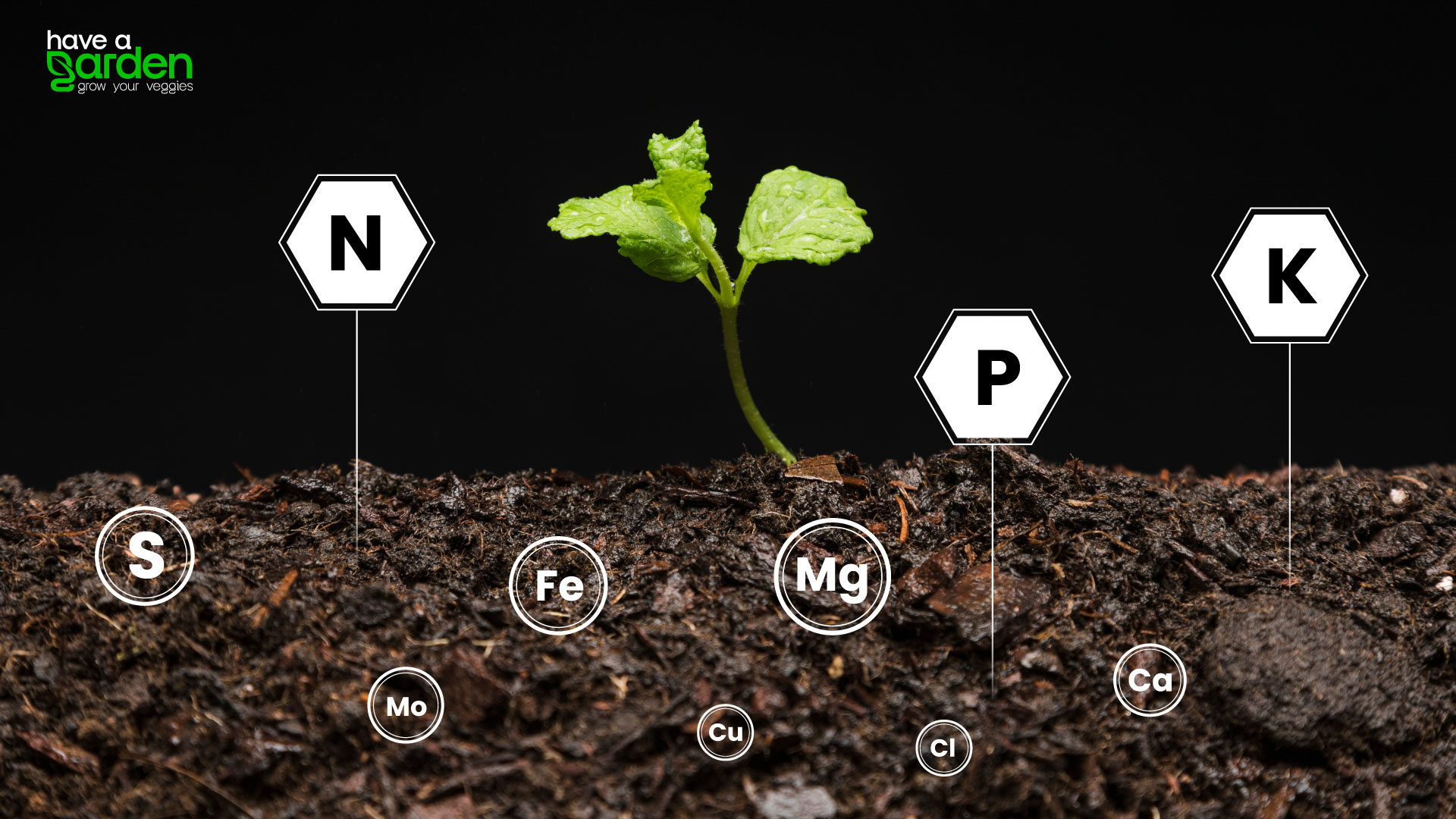
Exploring the Fundamentals of Plant Nutrition
In the realm of plant cultivation, understanding the vital nutrients essential for robust growth is paramount. Among these key nutrients are nitrogen (N), phosphorus (P), and potassium (K), each playing a crucial role in nurturing plants through various stages of development.
Nitrogen (N) – Fueling Lush Greenery Nitrogen stands as the cornerstone of luxuriant foliage, fostering vigorous leaf and stem growth while imparting a vibrant green hue. Particularly beneficial for crops like broccoli, cabbage, lettuce, and various herbs, nitrogen serves as the driving force behind thriving vegetative expansion. Boosting nitrogen levels in soil can be achieved through the incorporation of aged manure or supplements such as alfalfa meal, seaweed, fish, or blood meal.
Phosphorus (P) – Fostering Root Development and Blossoming Critical for the development of robust root systems, blossom formation, and fruitful harvests, phosphorus is indispensable for garden success. Crops such as cucumbers, peppers, squash, and tomatoes greatly benefit from adequate phosphorus levels. Elevating phosphorus content in soil can be accomplished through supplements like bonemeal or rock phosphate.
Potassium (K) – Strengthening Plant Resilience Potassium acts as a catalyst for fortifying root structures, bolstering disease resistance, and enhancing the flavor of crops. Crucial for vegetables like carrots, radishes, onions, and garlic, potassium ensures optimal plant vigor throughout their growth cycle. Increasing potassium levels in soil can be achieved by incorporating additives such as greensand, wood ashes, gypsum, or kelp.
By comprehending the roles of nitrogen, phosphorus, and potassium in plant development, cultivators can fine-tune their soil’s nutrient balance, paving the way for flourishing gardens and bountiful harvests.
Soil pH:
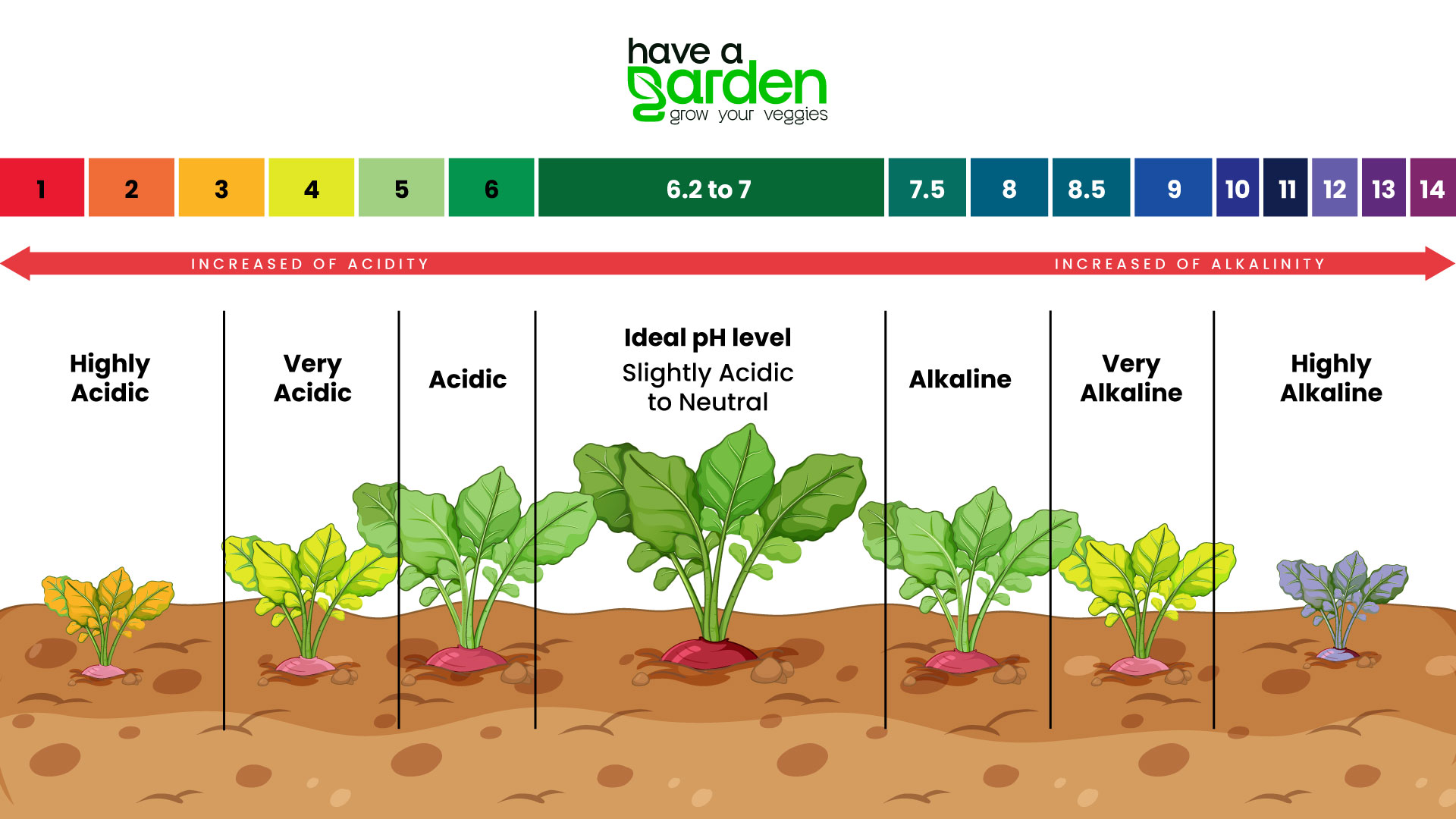
Optimizing Soil pH for Vibrant Plant Growth
Ensuring the ideal soil pH is fundamental for fostering thriving plant life, as it directly influences nutrient availability and absorption. Let’s explore the importance of soil pH and its impact on the vitality of your garden.
Understanding Soil pH and Its Significance
Soil pH stands as a crucial determinant of garden health, dictating the availability of essential nutrients critical for plant growth. Additionally, soil pH governs the plant’s capacity to uptake and utilize these nutrients efficiently.
Effects of Soil pH Imbalance
Any deviation from the optimal pH range can have detrimental effects on plant health. An excessively high or low soil pH can disrupt nutrient uptake, leading to deficiencies or toxicities, ultimately hampering plant growth and vigor.
Ideal pH Range for Garden Plants
For most garden plants to flourish, maintaining a soil pH level between 6.0 to 7.0 is imperative. Within this range, microbial activity thrives, facilitating nutrient decomposition and availability. Moreover, plants exhibit improved root growth, enhancing nutrient absorption efficiency.
Customizing pH for Plant Preferences
While the 6.0 to 7.0 pH range serves as a general guideline, it’s essential to consider individual plant preferences. Some plants may tolerate a broader pH spectrum, while others require specific pH levels for optimal growth. Understanding these preferences is vital for cultivating a diverse and flourishing garden.
Adjusting Soil pH
Achieving the ideal pH range may necessitate adjustments based on your soil’s current condition and the plants you intend to grow. Methods such as incorporating organic matter or applying soil amendments can effectively modulate pH levels. Regular monitoring and testing ensure that your soil maintains an optimal pH balance to support healthy plant growth.
In summary, soil pH is a critical factor in determining the health and productivity of your garden. By recognizing its importance and implementing appropriate measures, you can create an environment conducive to robust plant growth. Remember to customize pH adjustments according to specific plant requirements and regularly assess soil conditions for optimal results. With the right approach, you can cultivate a vibrant and flourishing garden throughout the year.
Revitalize Your Soil: Harnessing the Power of Organic Matter
Ready to witness your garden soil transform into a flourishing haven for your plants? The secret lies in enriching it with nutrient-packed organic matter. Whether you’re grappling with clayey, sandy, or nutrient-depleted soil, infusing organic amendments can work miracles. Let’s embark on a journey to unveil the perks and diverse array of soil amendments to elevate your gardening prowess.
The Marvels of Organic Matter
Infusing organic matter into your soil offers a plethora of benefits:
- Enhances Soil Structure and Drainage : Say goodbye to compacted soil nightmares! Organic matter plays a pivotal role in enhancing soil structure, facilitating better drainage, and aeration, which are imperative for robust root development. It works wonders in loosening up stubborn clay soil, rendering it crumblier and more receptive to water infiltration.
- Boosts Water-Holding Capacity: For those grappling with sandy soil woes, where water tends to trickle away swiftly, organic matter acts as a savior. It functions as a sponge, adept at retaining moisture and essential nutrients within the root zone. This ensures a steady water supply to plants even during dry spells, fostering consistent growth.
- Facilitates Nutrient Absorption: Bid adieu to synthetic fertilizers! Organic matter serves as a nutrient reservoir, gradually dispensing essential elements as per the plants’ requirements. This curtails the reliance on artificial fertilizers, paving the way for a sustainable gardening approach.
- Balances Soil pH: Achieving the perfect pH balance just got easier! Organic matter aids in regulating soil pH levels, creating an idyllic milieu for plant growth and optimizing nutrient assimilation. It’s a game-changer for fruits and veggies that thrive in slightly acidic to neutral soil conditions.
5. Fosters Soil Life: Picture a bustling subterranean metropolis teeming with beneficial microorganisms like earthworms, fungi, and bacteria. Organic matter acts as their nourishment source, fostering a vibrant underground community pivotal for nutrient recycling and soil aeration.
Exploring Organic Amendments
Now, let’s delve into the realm of popular organic amendments and their unique functions:
- Compost: The Gardener’s Gold: Compost, hailed as the “black gold” among gardening enthusiasts, epitomizes organic matter. Crafted from decomposed plant materials like kitchen scraps, yard waste, and manure, compost enriches soil with a smorgasbord of nutrients. Its incorporation works wonders in enhancing soil structure, ramping up microbial activity, and bolstering overall soil fertility.
- Leaf Mold: Nature’s Gift: Leaf mold, born from the decomposition of leaves, injects a dose of vitality into soil health. Laden with humus, it excels in improving moisture retention, making it a boon for sandy soils without overwhelming them with nutrients.
- Aged Manure: A Time-Honored Classic: When appropriately composted, aged manure emerges as a stellar soil conditioner and nutrient reservoir. However, exercise caution against deploying fresh manure in vegetable gardens, as it can harbor harmful pathogens and scorch delicate plant roots. Integrate aged manure well ahead of planting to allow ample decomposition time.
- Coconut Coir: Nature’s Bounty: Derived from coconut husks, coconut coir emerges as an eco-friendly alternative to peat moss. It works wonders in enhancing soil structure, bolstering water retention, and presenting a sustainable solution for soil enhancement.
- Cover Crops (Green Manure): Dual Action Dynamo: Cover crops such as clover, rye, or oats don a dual hat, serving as soil enhancers and weed suppressors. Sowing them at the season’s end infuses organic matter into the soil, enriching it with nutrients and bolstering soil structure upon tilling in spring. Embracing organic matter as your soil’s ally lays the foundation for sustainable gardening practices. Whether your aim is to fortify fertility, enhance drainage, or nurture a bustling soil ecosystem, organic amendments emerge as a natural panacea. Experiment with various organic matter types to unlock the ideal match for your soil type and gardening aspirations. By tending to your soil’s needs, you pave the path for abundant harvests and an enduring garden legacy.
Unlocking Soil Brilliance: Harnessing Organic Matter for Optimal Soil Health
Delving into the Essence of Organic Matter in Soil Health
Understanding the pivotal role of organic matter in soil health is akin to unlocking the secret to vibrant plant growth and flourishing landscapes. Whether you’re an experienced gardener or a novice, grasping the significance of organic materials and knowing the perfect timing for their incorporation is paramount for cultivating thriving ecosystems.
Timing Matters: Strategic Integration of Organic Matter
Introducing organic materials during fall sets the stage for their gradual breakdown and decomposition throughout the winter months. Enriching soil with organic matter transforms it into a nutrient reservoir, gradually dispensing essential elements that foster robust root development and spur biological activity.
If autumn passed by without addressing this task, fret not. Spring offers another opportunity to fortify your soil. Once the soil reaches a workable state, typically indicated by its crumbly texture, seize the moment to introduce amendments.
Evaluating Soil Workability
Assessing soil workability is a breeze. Grab a handful of soil from approximately 6 inches beneath the surface. Gently squeeze it. If the soil crumbles easily, it’s ripe for amendment. If it forms a ball that disintegrates upon pressure or crumbles with minimal force, it’s ready for work. However, if the soil retains its shape or leaves a thumb impression, it’s too moist and requires additional drying time.
Incorporating Organic Matter: A Step-by-Step Guide
- Application: Spread organic matter over your garden, aiming for a depth of 2 to 4 inches.
- Integration: Use a garden fork to thoroughly blend the organic matter into the top 6 to 8 inches of soil, ensuring even distribution.
- Consistency: Repeat this process each season to gradually enhance soil quality. Patience is paramount, as achieving optimal soil composition may necessitate multiple seasons of diligent amendment.
- Moisture Management: Following amendment, water the area generously and monitor soil moisture levels closely.
- Preparation for Planting: Allow a minimum of two weeks between amendment and planting. Prior to sowing seeds or transplanting, rake the soil to remove debris and level the surface.
Tailoring Amendments to Soil Types
Each soil type demands a tailored approach to amendment:
- Sandy Soil: Incorporate 3 to 4 inches of compost or well-rotted manure, alongside moisture-retaining agents like coconut coir. Mulching aids in moisture retention, while cover crops bolster soil structure.
- Clay Soil: Begin with 3 to 4 inches of compost to improve workability, followed by yearly additions of 1 inch of compost in fall. Integrate fibrous materials like straw or fine bark mulch for enhanced structure, avoiding sand additions that exacerbate soil density.
- Silty Soil: Combat erosion by annually supplementing 1 inch of organic matter. Minimize soil disturbance to prevent compaction, or opt for raised beds to mitigate soil-related issues.
- Loamy Soil: Although naturally balanced, loam benefits from periodic organic matter additions to address nutrient deficiencies and enhance plant vigor.
- Achieving Balance: Steering Clear of Organic Matter Overload While organic matter boasts undeniable benefits, moderation is key to avoid adverse effects. Excessive organic content can trigger heightened microorganism activity, depleting nitrogen reserves and disturbing soil pH levels. Aim for organic matter to constitute approximately 25% of the soil mixture, integrating it meticulously to maintain equilibrium.
By adhering to these principles and harnessing the enriching properties of organic matter, you’ll cultivate landscapes bursting with vitality and abundance.
FAQs (Frequently Asked Questions)
What are cover crops, and how do they benefit soil health?
Cover crops, also known as green manure, are plants grown primarily to benefit the soil rather than for harvest. They are sown at the end of the season and then tilled into the soil to enrich it with organic matter, nutrients, and improve soil structure. Cover crops help suppress weeds, prevent erosion, and promote soil fertility.
How can I adjust soil pH levels for specific plant preferences?
While the general guideline for soil pH is between 6.0 to 7.0, some plants may have specific pH requirements for optimal growth. You can adjust soil pH levels by adding materials like lime to raise pH or sulfur to lower pH, depending on the needs of the plants you’re growing. It’s essential to test the soil pH regularly and make adjustments accordingly.
Why is soil preparation essential for a healthy vegetable garden?
Soil preparation is crucial because it provides the foundation for healthy plant growth. Properly prepared soil ensures that plants receive the necessary nutrients, moisture, and oxygen for optimal development.
What are the initial steps for preparing the soil for a vegetable garden?
Before mixing fertilizer with the soil, it’s important to clean and dig the selected area, loosen the soil to a depth of at least 8-12 inches, and mix organic materials such as compost and aged manure into the soil.
What are the benefits of raised beds for gardening?
Raised beds offer several advantages, including improved drainage, better soil structure, easier weed control, and the ability to create optimal growing conditions for plants. They are particularly useful in areas with poor soil quality or limited space.
How can I protect my plants from cold weather and other environmental factors?
In colder regions, you can use black plastic or cardboard to block heat and protect plants from snow, rain, and erosion. This helps create a more favorable microclimate for plant growth.
What are the different types of soil, and how do they affect plant growth?
There are three main types of soil: loamy, clay, and sandy. Each type has unique characteristics that impact plant growth differently. Loamy soil is considered ideal due to its balanced blend of sand, silt, clay particles, and organic matter, while clay and sandy soils present their own challenges and benefits.
What are the key nutrients essential for plant growth, and how can they be provided to the soil?
The key nutrients essential for plant growth are nitrogen (N), phosphorus (P), and potassium (K). These nutrients can be provided to the soil through organic materials such as compost, aged manure, bonemeal, rock phosphate, greensand, and various supplements.
Why is soil pH important, and how can it be optimized for plant growth?
Soil pH is crucial because it influences nutrient availability and absorption by plants. Maintaining a soil pH level between 6.0 to 7.0 is ideal for most garden plants. Adjustments can be made by incorporating organic matter or applying soil amendments based on the specific needs of the plants being grown.
What are the benefits of organic matter in soil, and how can it be incorporated effectively?
Organic matter improves soil structure, enhances drainage, boosts water-holding capacity, facilitates nutrient absorption, balances soil pH, and fosters soil life. It can be incorporated into the soil by adding compost, leaf mold, aged manure, coconut coir, or cover crops.
How can I determine the optimal timing for incorporating organic matter into the soil?
Organic matter can be introduced during fall or spring, depending on soil workability. Assessing soil texture and moisture levels helps determine the right time for amendment. Generally, organic matter is spread over the garden and blended into the soil using a garden fork.
What precautions should be taken when amending different soil types with organic matter?
Different soil types require different approaches to amendment. For example, sandy soil benefits from compost or well-rotted manure to improve moisture retention, while clay soil requires compost to enhance workability and avoid compaction. It’s important to avoid overloading the soil with organic matter to maintain balance.
What should I consider when choosing organic amendments for my soil?
When selecting organic amendments for your soil, consider factors such as soil type, nutrient deficiencies, and the specific needs of the plants you intend to grow. Choose amendments that will address any soil issues while providing the necessary nutrients for healthy plant growth. Experimenting with different types of organic matter can help determine the best options for your garden.
How can I avoid overloading my soil with organic matter?
Overloading soil with organic matter can lead to imbalances in nutrient levels and microbial activity. To avoid this, incorporate organic matter gradually over time, monitoring soil conditions and plant health. Aim for a balanced approach, ensuring that organic matter makes up around 25% of the soil mixture. Regular soil testing can help determine if adjustments are needed.
What are some signs that my soil may need amendment or adjustment?
Signs that your soil may need amendment include poor drainage, compacted soil, nutrient deficiencies, or pH imbalances. Plant health issues such as stunted growth, yellowing leaves, or poor fruit development can also indicate soil problems. Conducting soil tests and observing plant behavior can help identify any issues that need to be addressed.
Are there any natural alternatives to synthetic fertilizers for enriching soil fertility?
Yes, organic amendments such as compost, aged manure, bone meal, and seaweed are natural alternatives to synthetic fertilizers. These amendments provide essential nutrients to the soil while improving soil structure and microbial activity. They are also more environmentally friendly and sustainable than synthetic fertilizers.
Can I use organic matter to improve soil health in containers or raised beds?
Yes, organic matter can be used to improve soil health in containers or raised beds just like in-ground gardens. Adding compost, aged manure, coconut coir, or other organic amendments to container soil or raised bed mix helps retain moisture, provide nutrients, and support plant growth. Regularly replenishing organic matter ensures continued soil fertility and health.

